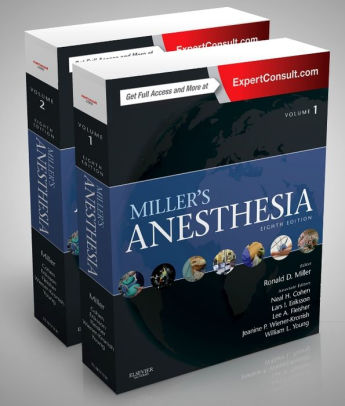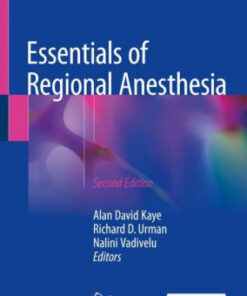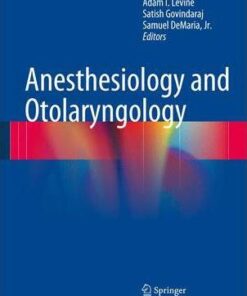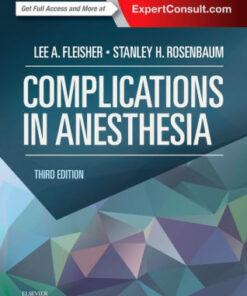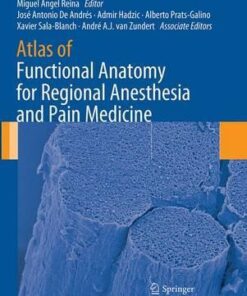(PDF) Miller’s Anesthesia 2 Volume Set 8th Edition by Ronald D. Miller
$22.00
Download instantly Miller’s Anesthesia 2 Volume Set 8th Edition by Ronald D. Miller, Lars I. Eriksson, Lee A Fleisher, Jeanine P. Wiener-Kronish, Neal H Cohen. It is ebook in PDF format.
ISBN-10: 0702052833 ISBN-13: 9780702052835
Preview
This is the PDF eBook version for Miller’s Anesthesia 2 Volume Set 8th Edition by Ronald D. Miller, Lars I. Eriksson, Lee A Fleisher, Jeanine P. Wiener-Kronish, Neal H Cohen
Table of Contents
Part I Introduction
Chapter 1. Scope of Modern Anesthetic Practice
Chapter 2. The International Scope, Practice and Legal Aspects of Anesthesia
Chapter 3. Perioperative Management
Chapter 4. Operating Room Management
Chapter 5. Medical Informatics
Chapter 6. Quality Improvement and Patient Safety
Chapter 7. Human Performance and Patient Safety
Chapter 8. Patient Simulation
Chapter 9. Teaching Anesthesia
Chapter 10. Ethical Aspects of Anesthesia Care
Chapter 11. Legal Aspects of Anesthesia Care in America
Chapter 12. Anesthesia Business Models
Part II Anesthetic Physiology
Chapter 13. Consciousness, Memory and Anesthesia
Chapter 14. Sleep Medicine
Chapter 15. Perioperative and Anesthesia Neurotoxicity
Chapter 16. The Autonomic Nervous System
Chapter 17. Cerebral Physiology and the Effects of Anesthetic Drugs
Chapter 18. Neuromuscular Physiology and Pharmacology
Chapter 19. Respiratory Physiology and Pathophysiology
Chapter 20. Cardiac Physiology
Chapter 21. Gastrointestinal Physiology and Pathophysiology
Chapter 22. Hepatic Pathology and Pathophysiology
Chapter 23. Renal Physiology, Pathophysiology, and Pharmacology
Part III Anesthetic Pharmacology
Chapter 24. Basic Principles of Pharmacology
Chapter 25. Inhaled Anesthetics: Mechanism of Action
Chapter 26. Inhaled Anesthetics Phamacokinetics: Uptake, Distribution, Metabolism, and Toxicity
Chapter 27. Inhaled Anesthetics: Pulmonary Pharmacology
Chapter 28. Inhaled Anesthetics: Cardiovascular Pharmacology
Chapter 29. Inhaled Anesthetics: Delivery Systems
Chapter 30. Intravenous Anesthetics
Chapter 31. Opioid Analgesics
Chapter 32. Nonopioid Pain Medications
Chapter 33. Intravenous Drug Delivery Systems
Chapter 34. Pharmacology of Neuromuscular Blocking Drugs
Chapter 35. Reversal (Antagonism) of Neuromuscular Blockade
Chapter 36. Local Anesthetics
Part IV Anesthesia Management
Chapter 37. Risk of Anesthesia
Chapter 38. Preoperative Evaluation
Chapter 39. Anesthetic Implications of Concurrent Diseases
Chapter 40. Anesthetic Implications of Complementary and Alternative Medications
Chapter 41. Patient Positioning and Associated Risks
Chapter 42. Neuromuscular Disorders and Other Genetic Disorders
Chapter 43. Malignant Hyperthermia and Muscle-Related Disorders
Chapter 44. Fundamental Principles of Monitoring Instrumentation
Chapter 45. Cardiovascular Monitoring
Chapter 46. Perioperative Echocardiography
Chapter 47. Electrocardiography, Perioperative Ischemia, and Myocardial Infarction
Chapter 48. Implantable Cardiac Pulse Generators: Pacemakers and Cardioverter-Defibrillators
Chapter 49. Neurologic Monitoring
Chapter 50. Monitoring Brain State During General Anesthesia and Sedation
Chapter 51. Respiratory Monitoring
Chapter 52. Renal Function Monitoring
Chapter 53. Neuromuscular Monitoring
Chapter 54. Temperature Regulation and Monitoring
Chapter 55. Airway Management in the Adult
Chapter 56. Spinal, Epidural, and Caudal Anesthesia
Chapter 57. Peripheal Nerve Blocks
Chapter 58. Ultrasound Guidance for Regional Anesthesia
Chapter 59. Perioperative Fluid and Electrolyte Therapy
Chapter 60. Perioperative Acid-Base Balance
Chapter 61. Patient Blood Management: Transfusion Therapy
Chapter 62. Patient Blood Management: Coagulation
Chapter 63. Patient Blood Management: Autologous Blood Procurement, Recombinant Factor Vlla Therapy, and Blood Untilization
Part V Adult Subspeciality Management
Chapter 64. Anesthesia and Treatment of Chronic Pain
Chapter 65. Palliative Medicine
Chapter 66. Anesthesia for Thoracic Surgery
Chapter 67. Anesthesia for Cardiac Surgical Procedures
Chapter 68. Anesthesia for Correction of Cardiac Arrhythmias
Chapter 69. Anesthesia for Vascular Surgery
Chapter 70. Anesthesia for Neurologic Surgery
Chapter 71. Anesthesia for Bariatric Surgery
Chapter 72. Anesthesia and the Renal and Genitourinary Systems
Chapter 73. Anesthesia and the Hepatobiliary System
Chapter 74. Anesthesia for Abdominal Organ Transplantation
Chapter 75. Anesthesia for Organ Procurement
Chapter 76. Brain Death
Chapter 77. Anesthesia for Obstetrics
Chapter 78. Anesthesia for Fetal Surgery and Other Fetal Therapies
Chapter 79. Anesthesia for Orthopaedic Surgery
Chapter 80. Geriatric Anesthesia
Chapter 81. Anesthesia for Trauma
Chapter 82. Anesthesia and Prehospital Emergency and Trauma Care
Chapter 83. The Role of the Anesthesia Provider in Natural and Human-Induced Disasters
Chapter 84. Anesthesia for Eye Surgery
Chapter 85. Anesthesia for Ear, Nose, and Throat Surgery
Chapter 86. Administration of Anesthesia by Robots
Chapter 87. Anesthesia for Robotically Conducted Surgery
Chapter 88. Anesthesia for Laser Surgery
Chapter 89. Ambulatory (Outpatient) Anesthesia
Chapter 90. Non-Operating Room Anesthesia
Chapter 91. Clinical Care in Extreme Environments: At High and Low Pressure and in Space
Part VI Pediatric Anesthesia
Chapter 92. Regional Anesthesia in Children
Chapter 93. Pediatric Anesthesia
Chapter 94. Anesthesia for Pediatric Cardiac Surgery
Chapter 95. Pediatric and Neonatal Intensive Care
Part VII Postoperative Care
Chapter 96. The Postanesthesia Care Unit
Chapter 97. Postoperative Nausea and Vomiting
Chapter 98. Acute Postoperative Pain
Chapter 99. Cognitive Dysfunction and Other Long-term Complications of Surgery and Anesthesia
Chapter 100. Postoperative Visual Loss
Part VIII Critical Care Medicine
Chapter 101. Critical Care Anesthesiology
Chapter 102. Critical Care Protocols and Decision Support
Chapter 103. Respiratory Care
Chapter 104. Nitric Oxide and Inhaled Pulmonary Vasodilators
Chapter105. Neurocritical Care
Chapter 106. Nutrition and Metabolomics
Chapter 107. Extracorporeal Support Therapies
Chapter 108. Cardiopulmonary Resuscitation: Basic and Advanced Life Support
Part IX Ancillary Issues and Responsibilities
Chapter 109. Electrical Safety in the Operating Room
Chapter 110. Environmental Safety Including Chemical Dependency
Chapter 111. Statistical Methods in Anesthesia
Chapter 112. Evaluation and Classification of Evidence for the ASA Clinical Practice Guideline
